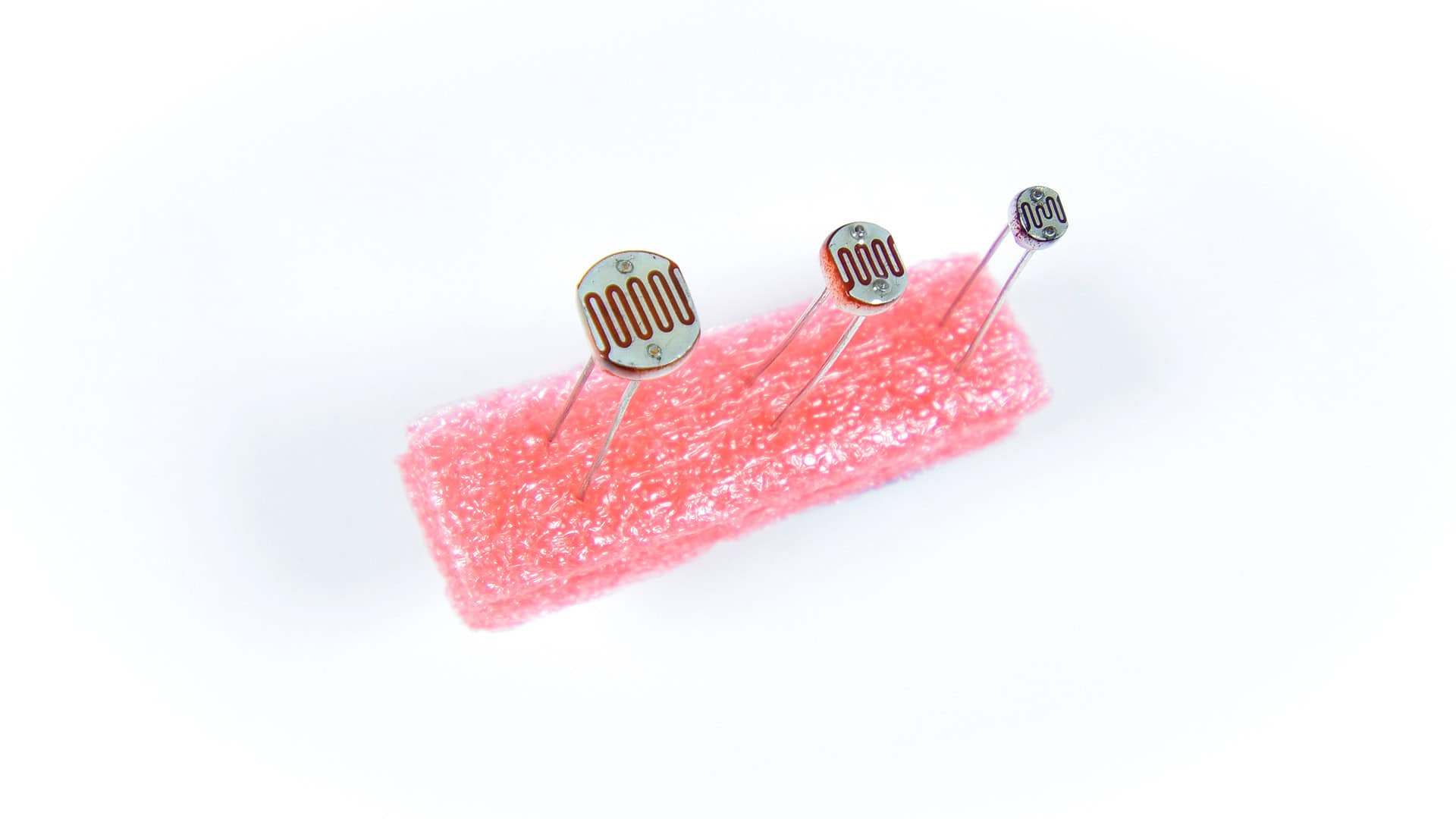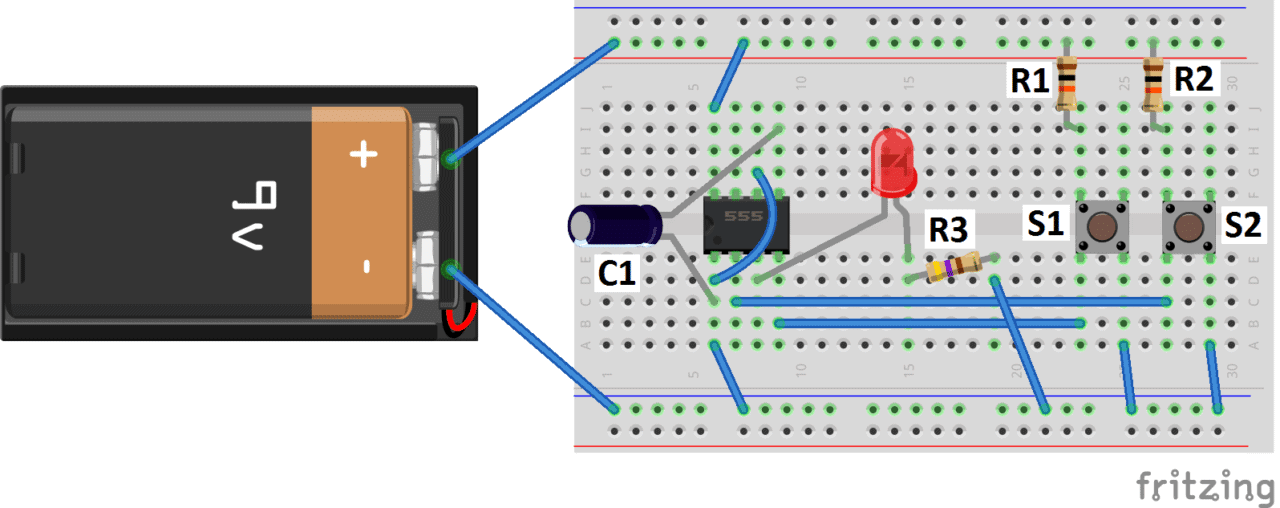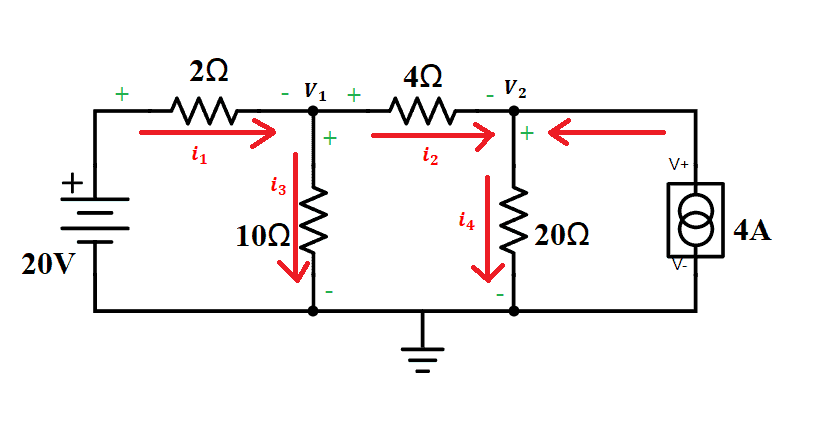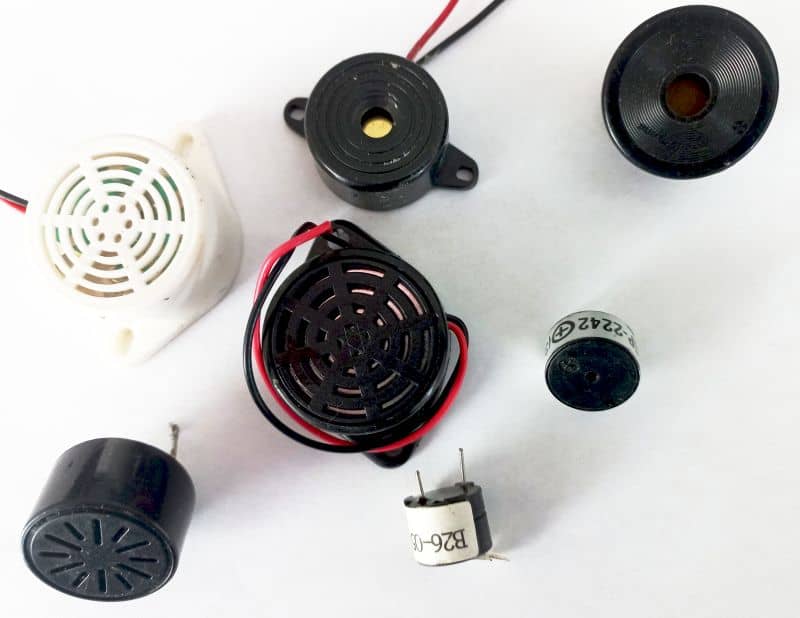Optoelectronic devices can be categorized into two different types – light detecting devices and light generating devices. Some examples of light-sensitive devices are photodiodes, phototransistors, and photoresistors. Examples of light-generating devices include light emitting diodes (LED), cathode ray tubes (CRT), and laser diodes.
In this article, we will look closely at some of the most common optoelectronic devices.
Photoresistors
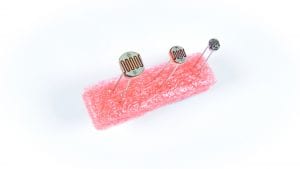
The word “photoresistor” comes from the combination of two words – photon (light particles) and resistor. Photoresistors are light sensitive resistors. When light hits the sensor, electrons move from the semiconducting material’s valance band to the conduction band. The more electrons in the conduction band, the less resistance there is to the flow of electrical current.
Simply put, a photoresistor’s resistance decreases when the light intensity increases. In the absence of light, the photoresistor’s resistance increases.
Photoresistors are usually made from silicon or germanium, which are high resistance semiconductors. Photoresistors can also be made of other materials such as cadmium sulfide or cadmium selenide.
Types of Photoresistors
- Intrinsic photoresistors – These photoresistors are made from pure semiconductor materials such as silicon or germanium. The resistance decreases slightly with the increase in light energy. Hence, intrinsic photoresistors are less sensitive to light.
- Extrinsic photoresistors – These photoresistors are made from extrinsic semiconductor materials. In extrinsic photoresistors, there is a large number of charge carriers. Providing a small amount of light energy generates a greater number of charge carriers. Thus, extrinsic photoresistors are more sensitive to light than intrinsic photoresistors.
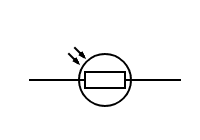
Photodiodes
Photodiodes are used in safety devices like fire and smoke detectors, in televisions, and in cameras where they act as photosensors. Photodiodes are also widely used in numerous medical instruments to analyze samples, detectors for computed tomography, and blood gas monitors.
Photodiodes are semiconductor devices that convert light into an electrical current. Current is generated when photons are absorbed in the photodiode. Photodiodes may contain optical filters and built-in lenses. Photodiodes usually have a slower response time as their surface area increases.
Photodiodes have a P-N junction. Between the P (positive) and N (negative) layers, there is an intrinsic layer. This generates a voltage when light hits the junction (active P-N junction). When an excited photon strikes the photodiode, electron-hole pairs are created. Electrons then diffuse into the P-N junction to generate an electric field.
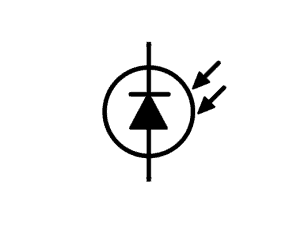
Laser Diodes
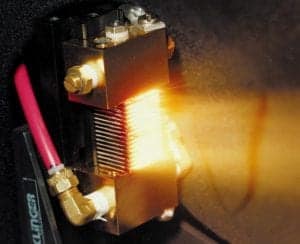
Laser stands for Light Amplification by Stimulated Emission of Radiation. Lasers can generate highly directional and focused monochromatic light. A laser diode is similar to a light-emitting diode (LED) in both form and operation.
Laser diodes have a wide range of uses that include fiber optic communication, barcode readers, laser pointers, CD/DVD/Blu-ray disc reading and writing, and laser printing.
How Laser Diodes Work
A laser diode works in three steps:
1. Energy Absorption – When a certain voltage is applied at the laser diode’s P-N junction, the electrons absorb energy, and they transition to a higher energy level. Holes are formed at the original position of the excited electron. The electrons stay in this excited state for a minimal duration of time.
2. Spontaneous Emission – After a certain amount of time, the excited electrons recombine with the holes. As the electrons fall from a higher energy level to a lower energy level, the difference in energy is converted into photons or electromagnetic radiation. The energy of the emitted photon is given by the difference between the two energy levels.
3. Stimulated Emission – A partially reflecting mirror is used on either side of the diode so that the photons released from spontaneous emission are trapped in the p-n junction until their concentration reaches a threshold value. These trapped photons stimulate the excited electrons to recombine with holes. Once the photon concentration goes above a threshold, they escape from the partially reflecting mirrors, resulting in a bright monochromatic light.
Types of Laser Diodes
- Double Heterostructure Laser Diode
- Quantum Well Laser Diode
- Quantum Cascade Laser Diode
- Inter-band Cascade Laser Diode
- Separate Confinement Heterostructure Laser Diode
- Distributed Bragg Reflector Laser Diode
- Distributed Feedback Laser Diode
- Vertical External Cavity Surface Emitting Laser Diode (VCSEL)
Phototransistors
Phototransistors are bipolar transistors that are sensitive to light. They are more sensitive to light than photodiodes. Phototransistors can sense light levels and alter the current flowing between the emitter and collector according to the level of light it receives.
The transistor’s base connection is generally left open or disconnected because it is often not required. The phototransistor base would only be used to bias the transistor so that additional collector current was flowing.
Applications of phototransistors include lighting control, alarm systems, level indicators, proximity detectors, punch-card readers, and encoders.

How Phototransistors Work
Phototransistors are made up of a semiconducting material. When light strikes the material, the free electrons/holes cause the base region’s current to flow. In the case of NPN phototransistors, the collector is made positive, and in PNP phototransistors the collector is kept negative. The light enters into the base region of the phototransistor and generates electron-hole pairs. The generation of electron-hole pairs mainly occurs in reverse biasing. The movement of electrons under the influence of the electric field is what causes the current to flow in the base region.
One major drawback of phototransistors is that they have a low-frequency response.
Bipolar vs Field Effect vs Darlington
Just like regular transistors, phototransistors can be both bipolar or field-effect transistors.
Field-effect phototransistors are light-sensitive field-effect transistors. Unlike bipolar transistors, field-effect transistors use light to generate a gate voltage that is used to control a drain-source current. Field-effect transistors are also susceptible to variations in light and are more fragile than bipolar phototransistors.
On the other hand, Darlington phototransistors are similar to a normal Darlington transistor with respect to their internal structure. A Darlington phototransistor’s sensitivity may be ten times higher than that of a normal phototransistor. However, the working frequency is lower than the other types and may be restricted to around 10kHz in some cases.
Optocouplers
Optocouplers are also known as optoisolators or photocouplers. They are semiconductor devices that use a short optical path to couple a signal from one electrical circuit to another, while providing electrical isolation. Optocouplers can be used to link data across two circuits without electrically connecting them.
Optocoupler contains two elements. The first is the light emitter. This is on the input side, taking the incoming signal and converting it into a light signal. Typically, the light emitter is a light-emitting diode.
The second element is the light detector. The light detector detects the light from the emitter and converts it back into an electrical signal within the optocoupler. The light detector can be a photodiode or a phototransistor. The light emitter and light detector are designed to have matching wavelengths so that the maximum coupling is achieved.
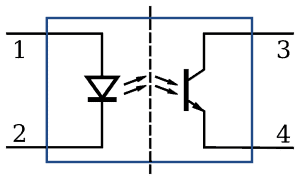
The main application of optocouplers is to isolate two circuits.
Optocouplers form the essential element in solid-state relays. Optical coupling is used to isolate the input and output electrically while enabling the output to be switched according to the input state. As a result, they are found in a surprisingly high number of circuits.
But optocouplers can also be used for switching applications and in various microcontroller-related operations where digital pulses or analog information needs to be isolated from high voltage circuitry.
Types of Optocouplers
- Slotted Optocoupler – Slotted optocouplers have a slot molded into the package between the LED light source and the phototransistor light sensor. The slot makes it so that the emitted light can be physically blocked from hitting the detector with an object passing through the slot. The slotted optocoupler can thus be employed in various presence-detecting applications, including end-of-tape detection and liquid level detection.
- Reflective Optocoupler – In reflective optocouplers, the LED and phototransistor are optically screened from each other within the package and both face outwards of the package. An optocoupled link can be set up by a reflective object placed a short distance outside the package, in line with the LED. The reflective coupler can thus be employed in applications such as tape-position detection, engine-shaft revolution counting, or smoke and fog detection.
Hope this guide has helped you understand the different types of optoelectronic devices out there! Feel free to leave a comment below if you have questions about anything.
